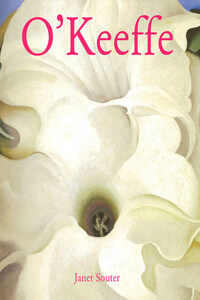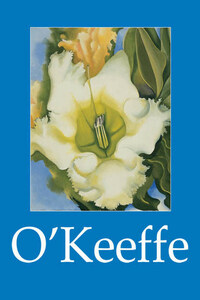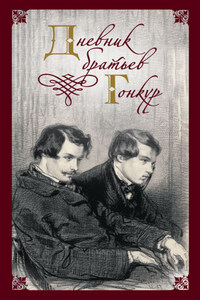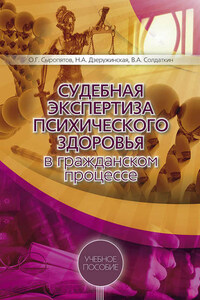Portrait of Georgia O’Keeffe.
Georgia O’Keeffe, in her ability to see and marvel at the tiniest detail of a flower or the vastness of the southwestern landscape, drew us in as well. The more she cultivated her isolation, the more she attracted the rest of the world. What is it that makes her legacy so powerful, even today? People recognize flowers, bones, buildings. But something in her paintings also shows us how to see. We stroll on the beach or hike a footpath and barely notice a delicate seashell or the subtle shades of a pebble; we kick aside a worn shingle. Driving through the desert we shade our eyes from the sun, blink, and miss the lone skull, signifying a life long since gone. Georgia embraced all these things and more, brought them into focus and forced us to make their acquaintance. Then, she placed them in a context that stimulated our imagination. The remains of an elk’s skull hovering over the desert’s horizon, or the moon looking down on the hard line of a New York skyscraper briefly guide us into another world.
Her abstractions tell us that the play of horizontal and vertical shapes, concentric circles, curved and diagonal lines, images that exist in the mind, are alive as well and deserve to be shared. Georgia sensed this even as an art student in the early part of this century as she sat copying other people’s pictures or plaster torsos.
In her own life, she showed women that it was possible to search out and find the best in themselves; easier today, not so easy when Georgia was young. Her later years serve as a role model for those of us who feel life is a downhill slide after the age of sixty. Well into her nineties, her eyesight failing, she still found ways to express what she saw and how it excited her.
We look at her work and talk about it, but even Georgia had difficulty putting her thoughts into words. Her thoughts were on the canvas. What we can do in this book is see her evolution, who influenced her and how she forever sought out new experiences.
We cannot discuss these discoveries with Georgia O’Keeffe. Those days are gone. But if we look around, we can see that she still talks to us.
To this day, her work is as bright, fresh and moving as it was nearly 100 years ago. Why? Because, although the paintings, simple in their execution, hold a feeling of order, of being well thought out, a steadiness, yet a vehicle to help all of us see and examine the sensual delicacy of a flower, the starkness of a bleached skull and the electricity of a Western sunset.
1887–1907
Early Years: The Shaping of Georgia O’keeffe
Grapes on White Dish – Dark Rim, 1920. Oil on canvas, 22.9 × 25.4 cm. Collection Mr and Mrs J.Carrington Woolley, Santa Fe.
Georgia Totto O’Keeffe was born on 15 November, 1887, on a farm near the village of Sun Prairie, Wisconsin, the first daughter and second child of Francis and Ida Totto O’Keeffe. Her older brother, Francis Jr., had been born about a year and a half earlier. As an infant, Georgia already had a perception of lightness, darkness, brightness and had an artist’s eye for detail. Her first memory is from her infancy. She recalls being seated on a quilt on the lawn in front of the family farmhouse. Her mother sat at a table on a long bench. A friend of the family, known as Aunt Winnie, stood at the end of the table. Georgia recalls “Winnie’s” golden hair and her dress made of a thin white material. Years later, when she related the memory to her mother, Ida remembered that Georgia had been about nine months old at the time.
Georgia’s childhood was singularly uneventful. She spent her early and middle years on the large family home near Sun Prairie, an area of rolling hills and farmland. Wild flowers grew on either side of the dusty roads in the spring; the heavy sawing of cicadas could be heard on warm summer evenings; women gathered vegetables from the garden beneath a canopy of leaves in the fall and children delighted in sleigh rides over snow-covered fields in the winter.
Following Georgia’s birth, five other children appeared in rapid succession: Ida, Anita, Alexius, Catherine and Claudia. In the evenings and on rainy days, Ida O’Keeffe, believing in the importance of education, read to her children books such as James Fenimore Cooper’s Leatherstocking Tales or stories of the West. Ida had spent much of her childhood on a farm next to the O’Keeffe’s property. When her father, George, left the family to return to his native Hungary, Ida’s mother, Isabel, moved the children to Madison, Wisconsin, where her children might have the opportunity for a formal education. Ida enjoyed pursuing her intellectual interests and as a young girl, thought of becoming a doctor. But when she reached her late teens, Francis O’Keeffe, who remembered her as the attractive girl from the nearby farm, visited her regularly in Madison and eventually proposed marriage. Isabel convinced Ida that Francis O’Keeffe possessed ambition and dependability, two excellent qualities in a husband. Ida liked Francis, although there was a history of tuberculosis in his family and people at that time avoided anyone whose relatives had died from the disease. Also, Ida was not enthusiastic about returning to Sun Prairie and its lack of cultural opportunities. Nevertheless, she listened to her mother, buried her ambitions, and on 19 February, 1884, became Mrs. Francis O’Keeffe. For the next several years, there was hardly a time when Ida was not pregnant or nursing. True, her husband worked tirelessly and they had a large home, but she was still a farmer’s wife whose education had been cut short.









